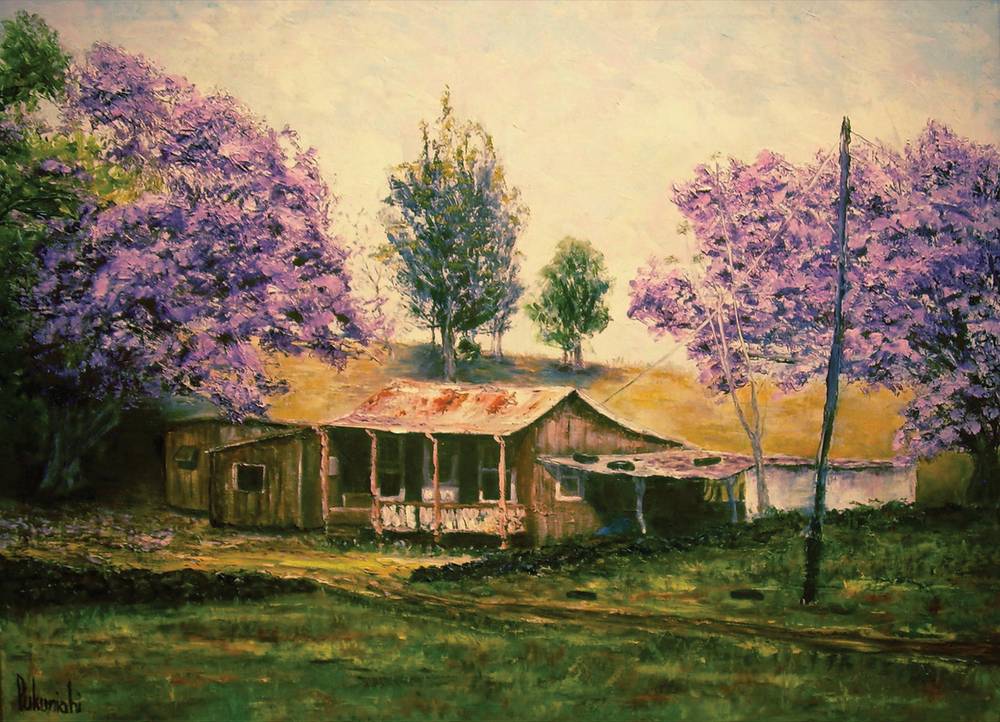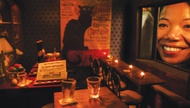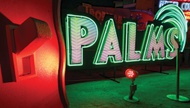Vance Cannon left Hawaii more than 20 years ago, but his soul still resides there. Every Saturday in the open studio at Left of Center Gallery, the Las Vegas resident summons lush tropical scenery with a palette knife and great dollops of oil color (a technique he learned from a beach bum who taught art in intervals only long enough to make enough money to get himself plastered).
Cannon’s work is both a paean and an elegy to a disappearing way of life. His Hawaii is not the tourist paradise of pristine beaches, swaying palms and babes in bikinis. It’s an agrarian Eden, where nature is idyllic and noble peasants toil in the fields. He’s a fourth-generation Hawaiian (his great-grandfather was one of the first Mormon missionaries to come to the islands in 1850), and he has a deep affection for the world in which he grew up—with its vast sugar plantations, cattle ranches and small, friendly towns. All well and good, but is that enough to compensate for his lack of formal artistic training? The answer: yes, and no. Certain subjects are within his ken; others are not.
The Details

- Through September 10
- Monday-Friday, noon-5 p.m.; Saturday, 10 a.m.-2 p.m.
- Left of Center Gallery, 2207 W. Gowan Road, 647-7378.
His most successful compositions feature a simple structure juxtaposed with glorious exuberant flora. In “Lone Palm,” the impossibly long, slender trunk of a Malaysian palm reaches into the sky while a shack sits cozily nestled beneath it. In “Puuanahulu Memories,” a ranch house is made magical by the surrounding fuchsia-colored jacaranda trees.
I liked his paintings of small towns. In the ironically titled “Hilo Sunshine,” brightly colored umbrellas and shop signs contrast with a brilliantly painted stormy sky. In writing about the confidently rendered “Itsu’s,” Cannon describes the subject as a “plate lunch shop in Hilo with best cone sushi,” underscoring the affection with which he painted it.
Unfortunately, his portraits, scenes of natives planting, fishing and herding cattle, suffer from a lack of skill at rendering the human figure. Only “Mana Cattle Check” transcends that deficit. The subject is a paniolo (cowboy) opening a gate, but the entire scene is seen through a haze, and the eye focuses on the overcast sky and obscured sun, rendered in subtle shades of pale yellow and gray that evoke a mood of reverie.





Previous Discussion: